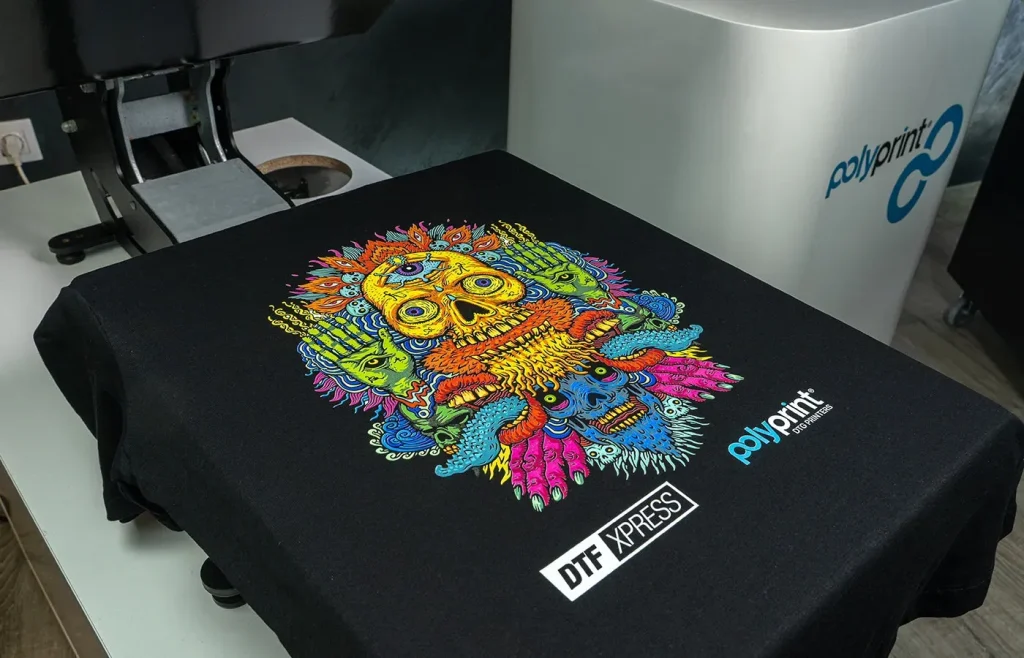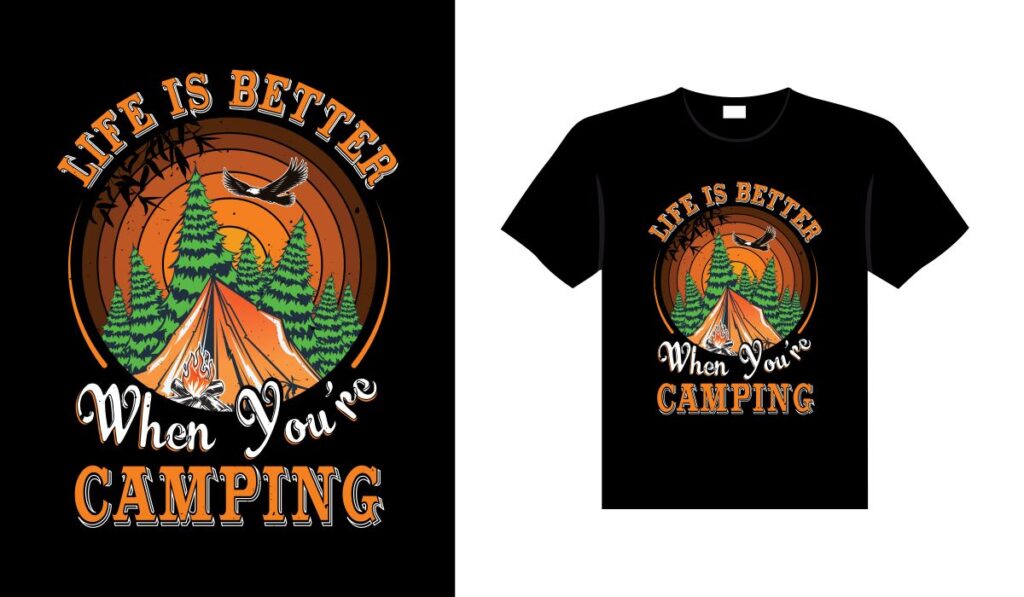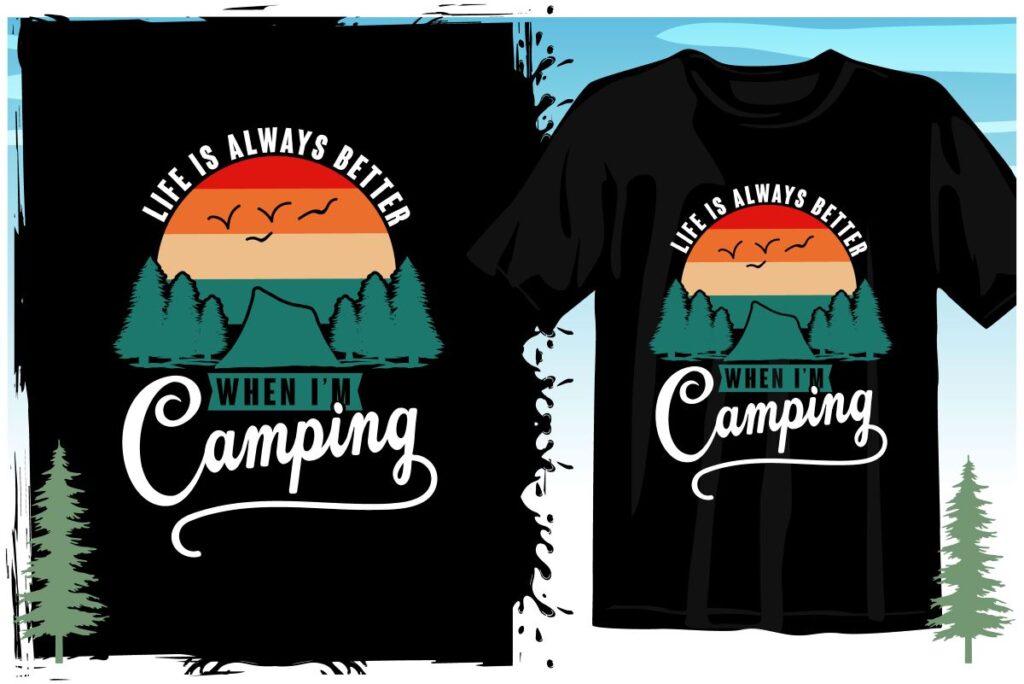In the realm of innovative printing solutions, DTF printing, or Direct-to-Film printing, has quickly established itself as a frontrunner. This cutting-edge technology enables printers to apply vibrant designs onto a variety of textiles with remarkable precision, making it a popular choice among businesses and artists. The advantages of DTF are numerous, including its impressive print quality, versatility across different materials, and cost-effective production methods. As sustainability rises in importance, DTF even offers eco-friendly options that appeal to environmentally conscious consumers. If you’re looking for a modern, efficient, and visually striking way to elevate your print projects, DTF printing may be the perfect solution for your needs.
As we delve deeper into the world of modern printing methodologies, you may come across terms such as Direct-to-Film (DTF) or film printing. These alternative descriptors emphasize a similar technology that excels in producing high-quality printed materials, catering to diverse fabric options. The benefits of this printing technique are evident through its cost-efficient approach and the ability to create detailed designs that stand out. Moreover, the rise of eco-friendly printing aligns with current market demands, allowing businesses to promote sustainable practices while maintaining high standards in production. By embracing advances in film printing, you can unlock the potential for creativity and efficiency in your printing endeavors.
Understanding DTF Printing: A Revolutionary Technique
Direct-to-Film (DTF) printing represents a significant advancement in the realm of printing technology. By bypassing traditional methods, DTF allows for a streamlined process where designs are directly printed onto a film and then transferred to the desired material. This innovative approach not only enhances efficiency but also expands the creative possibilities for artists and businesses alike. With the ability to produce intricate designs with vibrant colors, DTF is taking the printing industry by storm, offering a fresh alternative to established methods.
The process begins with high-resolution digital designs that are printed onto a specially coated film using DTF printers. Once printed, a layer of adhesive powder is applied, which is then cured to ensure adherence during the transfer process. This method stands out for its versatility, as it can accommodate a wide variety of materials, including cotton, polyester, and blends, making it suitable for diverse applications in fashion and promotional products. As a result, DTF printing is not only practical but also a game-changer for those looking to create custom pieces with precision.
Advantages of DTF Printing: Why It Stands Out
One of the key advantages of DTF printing is its remarkable adaptability across different materials and fabric types. Unlike screen printing, which may require specific treatments or limitations based on fabric characteristics, DTF works seamlessly on both light and dark textiles. This feature is particularly advantageous for businesses seeking to create a wide range of products—from apparel to custom textiles—without the worry of compatibility. The ability to print complex designs on various surfaces opens doors for creative applications, encompassing everything from high-fashion garments to niche promotional items.
In addition to its versatility, DTF printing is recognized for its impressive print quality. The technology employs a unique adhesive powder that ensures colors appear vibrant and details remain sharp, even after multiple washes. This durability speaks volumes for businesses aiming to produce high-quality products that stand the test of time. As customers increasingly seek out reliable and visually striking prints, the advantages of DTF printing position it as a first choice for brands looking to maintain a competitive edge in their offerings.
DTF vs. Traditional Printing: A Cost-Effective Option
When comparing DTF printing to traditional methods like screen printing, the cost-effectiveness of DTF becomes apparent. One of the most significant factors influencing this is the reduced setup time and lower initial investment required for DTF printers. Unlike screen printing, which often involves the creation of intricate screens for each color, DTF only necessitates a digital file and some basic supplies. This streamlined process enables businesses, especially small to medium-sized enterprises, to produce high-quality prints without incurring substantial financial burdens.
Additionally, DTF printing inherently supports print-on-demand strategies, allowing businesses to minimize inventory costs. This approach not only reduces waste but also aligns with the growing consumer trend of sustainable purchasing. Instead of overproducing items and risking excess stock, businesses can produce items as orders come in, ensuring fiscal responsibility and alignment with customer demands. This economic advantage not only benefits the bottom line but also enhances operational efficiency.
Rapid Turnaround Times with DTF Printing
In a fast-paced market where consumer expectations are ever-increasing, the ability to deliver products quickly is crucial. DTF printing excels in this area, offering significantly reduced turnaround times compared to traditional methods. The digital nature of DTF allows for rapid design modifications and instant printing, meaning businesses can respond almost immediately to market demands or unexpected opportunities. This agility not only satisfies customer needs but also fosters stronger relationships, as consumers appreciate prompt service and reliability.
Moreover, the efficiency of DTF printing ensures that businesses can manage their production schedules more effectively. With shorter production cycles, companies can replenish stocks more rapidly and maintain an up-to-date inventory that reflects current trends and preferences. This responsiveness is particularly valuable in industries like fashion and merchandise, where trends can shift overnight. As such, the quick turnaround offered by DTF is a significant advantage for any business looking to thrive in competitive environments.
Sustainability in DTF Printing: Eco-Friendly Benefits
As sustainability initiatives gain momentum across industries, DTF printing emerges as a frontrunner in eco-friendly practices within the printing sector. Utilizing less harmful inks and materials compared to conventional printing methods, DTF not only reduces the carbon footprint associated with production but also aligns with the values of environmentally-conscious consumers. This commitment to sustainability is increasingly important as customers prioritize brands that reflect their ethical stances.
The eco-friendly aspect of DTF printing extends beyond just materials; producers are also adapting their processes to further minimize waste. For instance, the ability to print on demand means that surplus production is significantly reduced, resulting in less environmental impact from discarded materials. This thoughtful approach to production not only appeals to a growing demographic of environmentally aware consumers but also establishes a brand’s reputation as a leader in sustainable practices, which can enhance customer loyalty and brand image.
Exploring the Future of DTF Printing Technology
The future of DTF printing is promising, with ongoing advancements set to refine and enhance this already robust technology. As manufacturers invest in research and development, users can expect improved print speeds, higher resolution output, and even more versatile material options. These innovations will not only elevate the quality of prints but can also expand the boundaries of creativity for designers, allowing them to explore new techniques and applications that were previously unattainable.
In addition to technological improvements, the growing adoption of DTF printing among various industries indicates a bright future for this method. From fashion brands to promotional items, more businesses are recognizing the advantages of DTF, leading to increased demand and further investment in infrastructure and resources. This trend signifies a shift in the printing landscape, where DTF printing is poised to become a mainstream option, effectively replacing some traditional printing methods as they adapt to meet modern demands.
Frequently Asked Questions
What is DTF printing and how does it work?
DTF printing, or Direct-to-Film printing, is a revolutionary printing process that transfers designs from a film to various textiles using heat and adhesive powder. The film is printed with special inks that, when heated, bond the design onto materials like cotton, polyester, and blends. This method allows for high-quality prints with vibrant colors and intricate details.
What are the advantages of DTF printing compared to traditional methods?
The advantages of DTF printing include its versatility in material choice, high print quality, cost-effective production, quick turnaround times, and eco-friendly options. Unlike traditional screen printing, DTF can print on a variety of fabrics and provides durable, vibrant results, making it a preferred choice for many businesses.
How does DTF print quality compare to other printing techniques?
DTF print quality is exceptional, providing vibrant colors and sharp details that often outperform methods like screen printing or heat transfer. The use of adhesive powder ensures that designs are durable and resistant to fading, even after multiple washes, making DTF a reliable choice for quality-conscious consumers.
Is DTF printing a cost-effective option for small businesses?
Yes, DTF printing is considered a cost-effective printing solution for small businesses. It requires a lower initial investment compared to traditional screen printing and allows for on-demand printing, reducing the need for large inventories. This flexibility helps businesses manage their budgets efficiently while still producing high-quality products.
Can DTF printing be considered an eco-friendly printing option?
Absolutely! DTF printing can be eco-friendly as it incorporates sustainable practices and inks that are less harmful to the environment. This commitment to sustainability appeals to eco-conscious consumers and allows businesses to reduce their carbon footprint while still producing high-quality prints.
What types of fabrics can be used with DTF printing?
DTF printing is highly versatile and can be used on a wide array of fabrics, including cotton, polyester, and blended materials. This broad compatibility makes DTF an ideal choice for various applications in apparel, home textiles, and promotional materials, regardless of whether the fabric is light or dark.
| Advantage | Description |
|---|---|
| Versatility in Material Choice | Compatible with a wide range of materials including cotton, polyester, and blends, suitable for diverse applications. |
| High-Quality Prints | Produces vibrant colors and intricate details with durable prints that withstand washes without fading. |
| Cost-Effective Production | More economical than traditional methods with lower upfront costs and efficient small batch production. |
| Quick Turnaround Time | Faster production speed due to digital printing methods, meeting demands promptly. |
| Eco-Friendly Options | Incorporates eco-friendly inks and practices, reducing environmental impact and appealing to conscious consumers. |
Summary
DTF printing stands out for its versatility and effectiveness in modern printing needs. As technological advancements reshape the industry, the advantages of this innovative method—including diverse material compatibility, high-quality output, cost-efficiency, rapid production times, and a focus on sustainability—position DTF printing as a preferred solution. Businesses that embrace DTF benefit from enhanced creative possibilities and the ability to respond swiftly to customer demands – a crucial factor in today’s competitive landscape. With its eco-friendly practices, DTF printing not only meets market needs but also aligns with the growing consumer preference for environmentally responsible choices. As a result, DTF printing is not merely a trend, but a transformative approach to printing that promises lasting impact.


